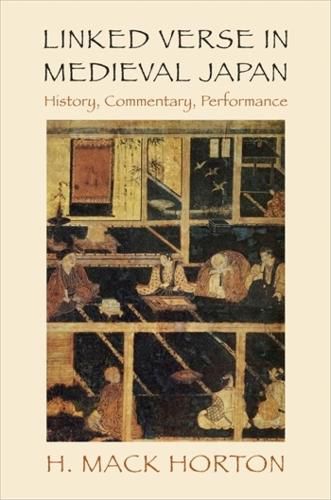Readings Newsletter
Become a Readings Member to make your shopping experience even easier.
Sign in or sign up for free!
You’re not far away from qualifying for FREE standard shipping within Australia
You’ve qualified for FREE standard shipping within Australia
The cart is loading…






Linked verse (renga) was the most popular form of poetry in Japan's medieval era (c. 1200-1600 CE). Renga poets linked verses of seventeen and fourteen syllables into long sequences in accordance with complex rules and literary allusions; the first verse, which initially stood alone, was the ancestor of the modern haiku. Courtiers, warriors, and commoners alike practiced linked verse in an atmosphere of literary artistry, scholarship, social sensitivity, and charged competition. The masters were often invited at great expense to warrior domains to preside at linked-verse sessions and provide instruction in the art. Some of Japan's most famous poets, notably Sogi and Basho, composed not only revered renga works but also books of guidance, history, theory, and commentary.
This book is the most comprehensive work in English on premodern Japanese linked verse. It includes a history of the genre in both its formal (ushin) and unorthodox (haikai) manifestations through the work of Basho, an introduction to linked-verse composition and commentaries, and an overview of the art's performative aspects. These three parts are each linked to original English translations: an early treatise on renga history, theory, and rules; a particularly intricate hundred-verse sequence and its contemporary commentaries; and two guides to mental attitude and deportment at a renga session. Wide-ranging and erudite, Linked Verse in Medieval Japan is a masterful account of the history, theory, and practice of one of Japan's great art forms.
$9.00 standard shipping within Australia
FREE standard shipping within Australia for orders over $100.00
Express & International shipping calculated at checkout
Stock availability can be subject to change without notice. We recommend calling the shop or contacting our online team to check availability of low stock items. Please see our Shopping Online page for more details.
Linked verse (renga) was the most popular form of poetry in Japan's medieval era (c. 1200-1600 CE). Renga poets linked verses of seventeen and fourteen syllables into long sequences in accordance with complex rules and literary allusions; the first verse, which initially stood alone, was the ancestor of the modern haiku. Courtiers, warriors, and commoners alike practiced linked verse in an atmosphere of literary artistry, scholarship, social sensitivity, and charged competition. The masters were often invited at great expense to warrior domains to preside at linked-verse sessions and provide instruction in the art. Some of Japan's most famous poets, notably Sogi and Basho, composed not only revered renga works but also books of guidance, history, theory, and commentary.
This book is the most comprehensive work in English on premodern Japanese linked verse. It includes a history of the genre in both its formal (ushin) and unorthodox (haikai) manifestations through the work of Basho, an introduction to linked-verse composition and commentaries, and an overview of the art's performative aspects. These three parts are each linked to original English translations: an early treatise on renga history, theory, and rules; a particularly intricate hundred-verse sequence and its contemporary commentaries; and two guides to mental attitude and deportment at a renga session. Wide-ranging and erudite, Linked Verse in Medieval Japan is a masterful account of the history, theory, and practice of one of Japan's great art forms.